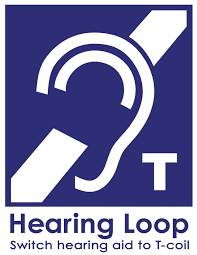
In today’s fast-paced and interconnected world, effective communication is vital. For individuals with difficulty hearing, assistive listening devices (ALDs) have become powerful tools that enhance communication and improve accessibility. In this blog post, we will delve into the world of ALDs, exploring their various types, benefits, and how they can transform the lives of individuals with hearing challenges.
What Are Assistive Listening Devices?
ALDs help overcome distance and background noise barriers, allowing individuals to focus on the speaker’s voice, resulting in enhanced speech clarity and understanding. These devices work in tandem with hearing aids or cochlear implants, helping individuals overcome specific listening challenges in different environments. They often involve sounding sound directly from the speaker to the listening via bluetooth or other forms of technology.
Types of Assistive Listening Devices
- Bluetooth Accessories: There are a variety of bluetooth devices that can be used to get direct streaming from a speaker or television to the listener’s hearing aids. Hearing aid wearers can utilize their bluetooth enabled hearing aids with their smartphone or add on devices for the television. A small microphone can be worn by a speaker to send sounds directly into a listener’s hearing aids. For more information on bluetooth hearing aids, check out our bluetooth blog.
- Induction Loop Systems: Induction loop systems use magnetic fields to transmit sound directly to hearing aids or cochlear implants equipped with telecoils. These systems are widely utilized in venues like places of worship, ticket counters, or information booths. You can find a list of venues in Arvada, CO, where telecoil is installed.
- FM Systems: FM systems use radio waves to transmit sound directly from the speaker to the listener. They are particularly useful in educational settings, meetings, or public places where the speaker’s voice needs to be heard clearly amidst background noise.
- Infrared Systems: Infrared systems employ infrared light to transmit sound signals. They are commonly used in theaters, cinemas, or conference rooms, providing an enhanced audio experience for individuals wearing compatible receivers.
How to Choose and Use Assistive Listening Devices
Seek guidance from an audiologist who can assess your hearing needs and recommend suitable ALDs based on your lifestyle and listening requirements. Your audiologist will ensure the ALD is correctly installed and synchronized with your hearing aid or cochlear implant and familiarize you with its functionality and controls to maximize its benefits.
Conclusion
Assistive listening devices have revolutionized communication and accessibility for individuals with hearing loss or difficulties. By amplifying sound, reducing background noise, and enhancing speech clarity, ALDs empower users to engage actively in various social, educational, and professional settings. With the continuous advancements in technology, the future holds even more promise for these devices, ensuring that no one is left behind in the conversation. Embrace the power of assistive listening devices and unlock a world of clearer communication and enhanced experiences for all.
